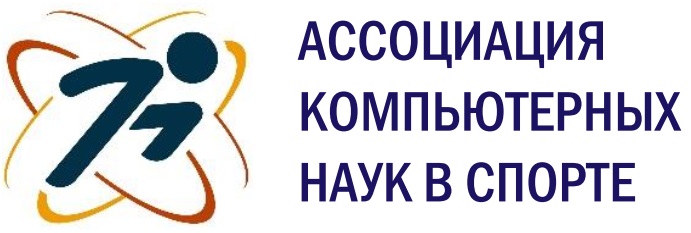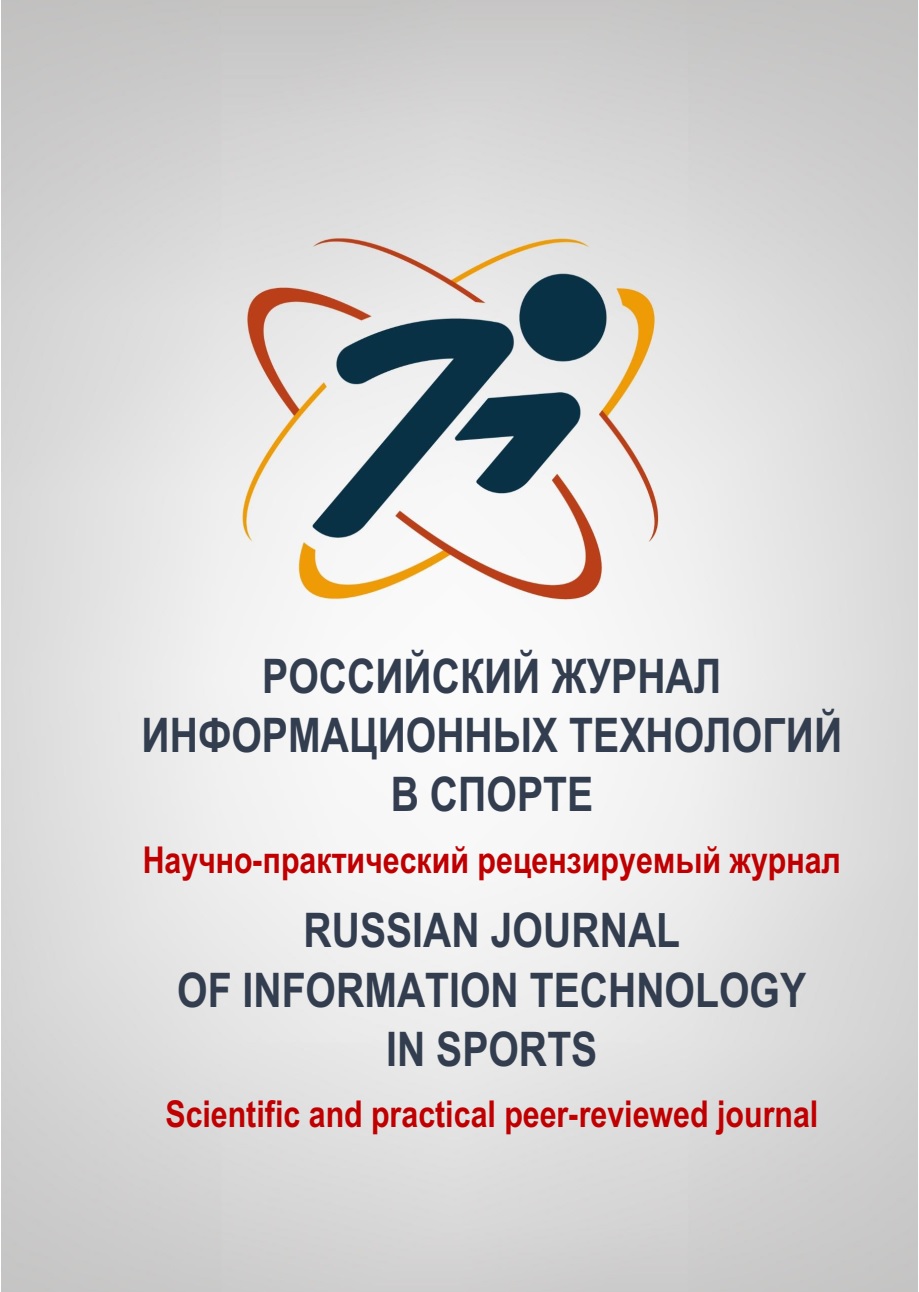Moscow, Russian Federation
Moscow, Moscow, Russian Federation
VAK Russia 1.5.2
VAK Russia 1.5.5
VAK Russia 1.2.2
VAK Russia 1.5.8
VAK Russia 3.3.9
VAK Russia 3.1.33
VAK Russia 5.8.5
VAK Russia 5.8.6
UDC 001.891.573
UDC 001.891.572
UDC 533.1
UDC 577.35
UDC 577.359
UDC 347.514.3
UDC 355.233.22
CSCSTI 34.39
CSCSTI 30.17
CSCSTI 34.17
CSCSTI 00.77
CSCSTI 77.00
Russian Classification of Professions by Education 06.03.01
Russian Classification of Professions by Education 01.03.03
Russian Classification of Professions by Education 02.00.00
Russian Library and Bibliographic Classification 222
Russian Library and Bibliographic Classification 22
Russian Library and Bibliographic Classification 28
Russian Library and Bibliographic Classification 75
Russian Trade and Bibliographic Classification 5713
Russian Trade and Bibliographic Classification 6464
Russian Trade and Bibliographic Classification 6154
Russian Trade and Bibliographic Classification 6123
BISAC COM072000 Computer Simulation
BISAC MED075000 Physiology
BISAC SCI036000 Life Sciences / Human Anatomy & Physiology
BISAC SCI018000 Mechanics / Dynamics
BISAC SCI009000 Life Sciences / Biophysics
BISAC COM062000 Data Modeling & Design
BISAC COM089000 Data Visualization
Relevance. It is known that lung ventilation regulation works via several principles: 1) by regulated parameters deviation from their homeostatic values; 2) by disturbance (via load applying on the system), able to cause gas composition changes in the blood; 3) by forecasting possible disturbances and deviations. The majority of the presented breathing regulation simulation models are based on the deviation principle, which turned out to be sufficient to explain the breathing changes occurring in the experiments with specifically changed partial pressure of carbon dioxide PaCO2, oxygen PaO2 and blood acidity level pH. But the deviation principle does not explain the breathing regulation during physical exercises. The alveolar gas composition stability at the moment of rest to physical activity transition indicates a high degree of coordination between the cardiovascular and respiratory components of the reaction. To explain the cardiorespiratory system's response to physical exercise onset requires the involvement of other principles, than deviation principle. It's likely that, at a qualitative level, the theory of "cardiodynamic hyperpnea" describes well the cardiorespiratory system's response to physical exercise. Although physiological mechanisms that provide the very rapid increase in blood flow and ventilation in response to the physical exercise onset, remain uncertain, mathematical simulation allows us to quantitatively test hypotheses about the dynamics of the system parameters' response to simulated exercises. Compared to the rapid blood flow response to physical exercises, slower processes of respiratory response are manifested in the alveolar fractional concentration of CO2 increase, in the alveolar fractional concentration of O2 moderate decrease and in a following ventilation additional increase, expressed by the interaction of peripheral and central chemoreflexes. The aim of this literature review was to analyze existing approaches to mathematical modeling of the breathing response to changes of inhaled air's gas composition and physical exercises.
gasexchange, simulation models, breathing under load, cardiodynamic hyperpnea, lung ventilation
1. Breslav I.S., Bryantseva L.A., Voronov I.B. et al. Physiology of respiration. Fundamentals of modern physiology, Saint Petersburg: Nauka Publishing House, 1994, 680 p. (in Russ.) EDN: https://elibrary.ru/wasteb
2. Ermolaev E.S., Dyachenko A.I., Shulagin Y.A., Suvorov A.V., Parshin K.S. Simulation of Gas Dynamics in a Subject Breathing via Self-Contained Self-Rescue Apparatus. Romanian Journal of Physics, 2020, 65(704). pp. 1-12. EDN: https://elibrary.ru/abyggk
3. Ursino M., Magosso E., Avanzolini G. An integrated model of the human ventilatory control system: the response to hypoxia. Clinical Physiology, 2001, 21(4), pp. 465–477. DOI: https://doi.org/10.1046/j.1365-2281.2001.00350.x
4. Matveikin V.G., Alekseyev S. ., Zakharov A.Y., Tugolukov E.N. A method for the development of self-contained breathing apparatus using computer modeling. International Journal of Engineering and Technology (UAE), 2018, 7(3), pp. 481–486. DOI: https://doi.org/10.14419/ijet.v7i3.14.17046
5. Grodins F.S., Gray J.S. Mathematical models of respiratory regulation. Annals of the New York Academy of Sciences, 1963, 109(2), pp. 852-868. DOI: https://doi.org/10.1111/j.17496632.1963.tb13510.x
6. Fan H.-H., Khoo M.C.K. PNEUMA- a comprehensive cardiorespiratory model. Proceedings of the Second Joint 24th Annual Conference and the Annual Fall Meeting of the Biomedical Engineering Society, 2002, (2), pp. 1533–1534. DOI: https://doi.org/10.1109/IEMBS.2002.1106522
7. Maggosso E., Ursino M. A mathematical model of CO2 effect on cardiovascular regulation. American Journal of Physiology-Heart and Circulatory Physiology, 2001, 281(5), pp. H2036–H2052. DOI: https://doi.org/10.1152/ajpheart.2001.281.5.H2036
8. Khamnei S., Robbins P.A. Hypoxic depression of ventilation in humans: alternative models for the chemoreflexes. Respiration Physiology, 1990, 81(1), pp. 117–134. DOI: https://doi.org/10.1016/00345687(90)90074-9
9. Ben-Tal A. Simplified models for gas exchange in the human lungs. Journal of Theoretical Biology, 2006, 238(2), pp. 474–495. DOI: https://doi.org/10.1016/j.jtbi.2005.06.005
10. Hermand E., Lhuissier F., Voituron N., Richalet J.P. Ventilatory oscillations at exercise in hypoxia: a mathematical model. Journal of Theoretical Biology, 2016, 411, pp. 92–101. DOI: https://doi.org/10.1016/j.jtbi.2016.10.002
11. Hermand E., Lhuissier F.J., Larribaut J., Pichon A., Richalet J.P. Ventilatory oscillations at exercise: effects of hyperoxia, hypercapnia, and acetazolamide. Physiological Reports, 2015, 3(6), e12446. DOI: https://doi.org/10.14814/phy2.12446
12. Latshang T.D., Turk A.J., Hess T., Schoch O.D., Bosch M.M., Barthelmes D., Merz T.M., Hefti U., Hefti J.P., Maggiorini M., Bloch K.E. Acclimatization improves submaximal exercise economy at 5533 m. Scandinavian Journal of Medicine & Science in Sports, 2013, 23(4), pp. 458–467. DOI: https://doi.org/10.1111/j.1600-0838.2011.01403.x
13. Ward D.S., Nguyen T.T. Ventilatory response to sustained hypoxia during exercise. Medicine and Science in Sports and Exercise, 1991, 23(6), pp. 719–726.
14. Duffin J., Mohan R.V., Vasilou P., Stephenson R., Mahamed S. A Model of the chemoreflex control of breathing in humans: model parameters measurement. Respiration Physiology, 2000, 120(1), pp. 13–26. DOI: https://doi.org/10.1016/S0034-5687(00)00095-5
15. Golov A.V., Simakov S.S. Mathematical model of regulation of pulmonary ventilation in hypoxia and hypercapnia. Computer Research and Modeling, 2017, 9(2), pp. 297-310. (in Russ.) DOI: https://doi.org/10.20537/2076-7633-2017-9-2-297-310
16. Wasserman K. Breathing during exercise. New England Journal of Medicine, 1978, 298(14), pp. 780-785. DOI: https://doi.org/10.1056/NEJM197804062981408
17. Wasserman D.H., Whipp B.J. Coupling of ventilation in pulmonary gas exchange during non steady-state work in men. Journal of Applied Physiology: Respiratory, Environmental and Exercise Physiology, 1983, 54(2), pp. 587-593. DOI: https://doi.org/10.1152/jappl.1983.54.2.587
18. Ermolaev E.S., Dyachenko A.I., Shulagin Yu.A. Simulation of human breathing gas exchange for the ventilation regulation study. Physics of Biology and Medicine, 2024, (1), pp. 55-76. (in Russ.) DOI: https://doi.org/10.7256/2730-0560.2024.1.69226
19. Cullen J.D., Eger E.I. Cardiovascular effects of Carbon dioxide in man. Anesthesiology, 1974, 41(4). DOI: https://doi.org/10.1097/00000542-197410000-00006
20. Kelman G.R., Nun J.F., Prys-Roberts C., Greenbaum R. The influence of cardiac output on arterial oxygenation: a theoretical study. British Journal of Anaesthesia, 1967, 39(6). pp. 450-458. DOI: https://doi.org/10.1093/bja/39.6.450
21. Cherniack N.S., Longobardo G.S. Oxygen and carbon dioxide gas stores of the body. Physiological Reviews, 1970, 50(2), pp. 196–243. DOI: https://doi.org/10.1152/physrev.1970.50.2.196
22. Read D.J.C. A clinical method for assisting the ventilatory response to carbon dioxide. Australasian Annals of Medicine, 1967, 16(1), pp. 20-32. DOI: https://doi.org/10.1111/imj.1967.16.1.20
23. Spencer J.L., Firouztal E., Mellins R.B. Computational expressions for blood oxygen and carbon dioxide concentrations. Annals of Biomedical Engineering, 1979, 7(1), pp. 59–66. DOI: https://doi.org/10.1007/BF02364439
24. Kanaev N.N., Shik L.L., Kuznetsova V.K. Guidelines for Clinical Respiratory Physiology. Leningrad: Medicine Publ., 1980, 376 p. (in Russ.) URL: https://rusneb.ru/catalog/000199_000009_001016890/
25. Krogh A., Lindhard J. The regulation of respiration and circulation during initial stages of muscular work. The Journal of Physiology, 1913, 47(1-2), pp. 112–136. DOI: https://doi.org/10.1113/jphysiol.1913.sp001616
26. Whipp B.J. Ventilatory control during exercise in humans. Annual Review of Physiology, 1983, 45(1), pp. 393-413. DOI: https://doi.org/10.1146/annurev.ph.45.030183.002141
27. Marshak M.E. On the ratio of humoral and nervous factors in the regulation of respiration. On the regulation of respiration, blood circulation and gas exchange. Collection of works of the Laboratory of Respiration and Blood Circulation of the Department of Vegetative Physiology, Moscow: Publishing House of the USSR Academy of Medical Sciences, 1948, pp. 5-27. (in Russ.) URL: https://rusneb.ru/catalog/000200_000018_rc_4077739/
28. Marshak M.E. Regulation of Respiration in Humans. Moscow: Medgiz Publ., 1961, 137 p. (in Russ.) URL: https://rusneb.ru/catalog/000200_000018_rc_4573329/
29. Marshak M.E. Regulation of respiration. In: Physiology of Respiration. Manual of Physiology, Leningrad: Nauka Publ., 1973, pp. 256-260. (in Russ.) URL: https://rusneb.ru/catalog/010003_000061_933aa51acf51b869dbeacbba6f8bee14/
30. Dejours P. Control of respiration in muscular exercise. Handbook of Physiology. Section 3. Respiration , Vol. I, Chapter 25 (Ed. by Fenn W.O., Rahn H.), Washington, DC: American Physiological Society, 1964, pp. 631–648. https://doi.org/10.5962/bhl.title.6400
31. Kao F.F. An experimental study of the pathways involved in exercise hyperpnoea employing cross-circulation techniques. The Regulation of Human Respiration: The proceedings of the J.S. Haldane centenary symposium] (Ed. Cunningham D.J.C., Lloyd B.B.), Philadelphia: F.A. Davis, 1963, pp. 461–502. URL: https://cir.nii.ac.jp/crid/1573950399853114112
32. McCloskey D.I., Mitchell J.H. Reflex cardiovascular and respiratory responses originating in exercising muscle. The Journal of Physiology, 1972, 224(1), pp. 173-186. DOI: https://doi.org/10.1113/jphysiol.1972.sp009887
33. Hornbein T.F., Sorensen S.C., Parks C.R. Role of muscle spindles in breathing during bicycle exercise. Journal of Applied Physiology, 1969, 27(4), pp. 476-479. DOI: https://doi.org/10.1152/jappl.1969.27.4.476
34. Hodgson H.J.F., Mathews P.B.C. Ineffectiveness of excitation of the primary endings of the muscle spindle by vibration as a respiratory stimulant in the decerebrate cat. The Journal of Physiology, 1968, 194(2), pp. 555-563. DOI: https://doi.org/10.1113/jphysiol.1968.sp008424
35. Young I.H., Woolcock A.J. Changes in arterial blood gas tensions during unsteady-state exercise. Journal of Applied Physiology, 1978, 44(1), pp. 93-96. DOI: https://doi.org/10.1152/jappl.1978.44.1.93
36. Edwards R.H.T., Denison D.M., Jones G., Davies C.T.M., Campbell E.J.M. Changes in mixed venous gas tensions at start of exercise in man. Journal of Applied Physiology, 1972, 32(2), pp. 165-169. DOI: https://doi.org/10.1152/jappl.1972.32.2.165
37. Wasserman K., Whipp B.J., Casaburi R., Beaver W.L. Carbon dioxide flow and exercise hyperpnea: cause and effect? American Review of Respiratory Disease, 1977, 115(S), pp. 225-237. DOI: https://doi.org/10.1164/arrd.1977.115.S.225
38. Wasserman K., Whipp B.J. Exercise physiology in health and disease. American Review of Respiratory Disease, 1975, 112(2), pp. 219-249. DOI: https://doi.org/10.1164/arrd.1975.112.2.219
39. Whipp B.J., Wasserman K., Casaburi R. Juratsch C. E., Weissman M. L., Stremel R.W. Ventilatory control characteristics of conditions resulting in isocapnic hyperpnea. Control of Respiration During Sleep and Anesthesia (Ed. Fitzgerald R., Lahiri S., Gautier H.). New York: Plenum, 1978, pp. 355–365. DOI: https://doi.org/10.1007/978-1-4613-4009-6_38
40. Cunningham D.J.C. The control system regulating breathing in man. Quarterly Reviews of Biophysics, 1974, 6(4), pp. 433-483. DOI: https://doi.org/10.1017/S003358350000158X
41. Brown H.V., Wasserman K., Whipp B.J. Effect of beta-adrenergic blockade during exercise on ventilation. Journal of Applied Physiology, 1976, 41(6), pp. 886-892. DOI: https://doi.org/10.1152/jappl.1976.41.6.886
42. Jones P.W., French W., Weissman M.L., Wasserman K. Ventilatory responses to changes in cardiac output in patients with cardiac pacemaker. Journal of Applied Physiology, 1981, 51(5), pp. 1103-1107. DOI: https://doi.org/10.1152/jappl.1981.51.5.1103
43. Gautier H., Lacaisse A., Dejours P. Ventilatory response to muscle spindle stimulation by succinylcholine in the cat. Respiration Physiology, 1969, 7(3), pp. 383-388. DOI: https://doi.org/10.1016/0034-5687(69)90021-8
44. Kao F.F., Schlig B.B., Brooks C. Regulation of respiration during induced muscular work in decerebrate dogs. Journal of Applied Physiology, 1955, 7(4), pp. 379-386.
45. Tibes U. Reflex inputs to the cardiovascular and respiratory centers from dynamically working canine muscles. Circulation Research, 1977, 41(3), pp. 332-341. DOI: https://doi.org/10.1161/01.RES.41.3.332
46. Eldridge F.L., Millhorn D.E., Waldrop T.G. Exercise hyperpnea and locomotion: parallel activation from the hypothalamus. Science, 1981, 211(4484), pp. 844-846. DOI: https://doi.org/10.1126/science.7466362
47. Wasserman K., Whipp B.J., Casaburi R. Respiratory control during exercise. Comprehensive Physiology, 2011, pp. 595-619. DOI: https://doi.org/10.1002/cphy.cp030217
48. Weissman M.L., Jones P.W., Oren A., Lamarra N., Whipp B.J., Wasserman K. Cardiac output increase and gas exchange at start of exercise. Journal of Applied Physiology: Respiratory, Environmental and Exercise Physiology, 1982, 52(1), pp. 236-244. DOI: https://doi.org/10.1152/jappl.1982.52.1.236
















